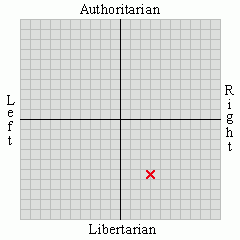I got to thinking about history today and all the changes that have happened during my lifetime. Comparing what the world looks like today versus what it looked like when my parents took me home from that hospital on the Army base in West Germany, it is kind of amazing to think about all the changes that have happened.
...Richard Nixon was President and his Vice-President was Spiro Agnew. Expansion of the Vietnam War into Cambodia was the hottest political issue of the day. The Soviet Union appeared poised to win the Cold War and only the threat of mutual nuclear annihilation prevented the United States and the Soviet Union from going to war. Students in both countries were taught by their schoolteachers to “duck and cover” under their desks to increase their chances of survival in the event of a nuclear attack.
...The second-biggest city in the United States was Chicago. The global population was around 3.6 billion. Ronald Reagan was the Governor of California. Arnold Schwarzenegger won his first Mr. Olympia title and starred in a movie called Hercules in New York under the psedonym “Arnold Strong,” chosen because it was thought no one could pronounce the bodybuilder's real last name.
...The peak of audio playback technology was a reel-to-reel player. There was no way to record television shows to watch them later. FM radio stations were still something of a novelty. No one had microwave ovens and a computer’s power and usefulness was directly proportional to its size -- bigger was better and memory took the form of external tape reels feeding data into solid-state transitor mainframes. Telegrams were still in use and the "telex," a predecessor of the modern fax machine, was a technical marvel few businesses could afford.
...“Xerox” was a verb, and carbon paper was still considered a viable alternative to using such a cumbersome machine. The year I was born, Xerox corporation began researching a "microcomputer" suitable for home use, complete with a point-and-click mouse and a graphic interface, but abandoned the project as lacking commercial potential.
...Telephone service was provided by a single company to everyone, and only land lines were available. Oil was still burned to produce electricity in power plants. Supersonic commercial air travel was becoming the wave of the future. Airports had only been screening passengers for security for three months. No one bothered to learn what the fuel efficiency of their cars were; gasoline cost thirty-six cents a gallon. A stamp for first-class U.S. Mail cost six cents.
...Encyclopedias taught that the oceans provided a “limitless” supply of food to mankind. There was no EPA or OSHA. No one had ever heard of “global warming.”
...The World Trade Center in New York City was not yet completed. The tallest building in the world was the Empire State Building. The Dow Jones average for the year was 858 points, and there was no such thing as the NASDAQ. A company did cross-industrial retail promotion with a voucher device called "S&H Green Stamps," and although the merchandise catalog offered for redemption of the stamps was the largest and most-frequently published book in the United States, the vast majority of the stamps were never redeemed at all.
...In England, it was still 240 pence to a pound and banks dispensed half-pennies. Fiji was part of France. There were two Germanys, one Czechoslovakia, and one Yugoslavia. The European Union was a coal-purchasing collective. The U.S. dollar was convertible to its worth in gold, on demand.
...Janis Joplin and Jim Morrison were still alive, Elvis Presley was on tour, and the Beatles were still together, albeit with some internal friction. George Lazenby played James Bond. The top-rated television show was Marcus Welby, M.D.; the top-grossing movie was Airport. There was no PBS or NPR. No one had heard of a cartoon named Doonesbury.
...Divorce was still illegal in Italy. Abortions were still illegal in 40 out of 50 states (and the District of Columbia) in the United States.
...The Baltimore Orioles won the World Series, Joe Frazier was the heavyweight boxing champion of the world, John Wooden’s UCLA Bruins won the NCAA basketball tournament, and the Kansas City Chiefs had won the Super Bowl. A 30-second commercial in that Super Bowl cost $78,000. Carol Channing was the halftime entertainment. (I was born a few days after Monday Night Football was first broadcast.)
...Cigarettes were advertised on television commercials. It was still news to a lot of people that cigarettes were not harmless. You could smoke in your airplane seat while mid-flight. The world’s biggest airline was Pan-Am, and for the most part, air travel was a luxury that few middle-class people enjoyed with any regularity.
...Fewer than one in ten Americans had college degrees, and a high school diploma was the ticket to a good job. Nearly one in five American workers was part of a union. The median new home price was $23,450 -- about three years' worth of the average American's salary of $9,400.
January 29, 2007
Subscribe to:
Post Comments (Atom)







No comments:
Post a Comment